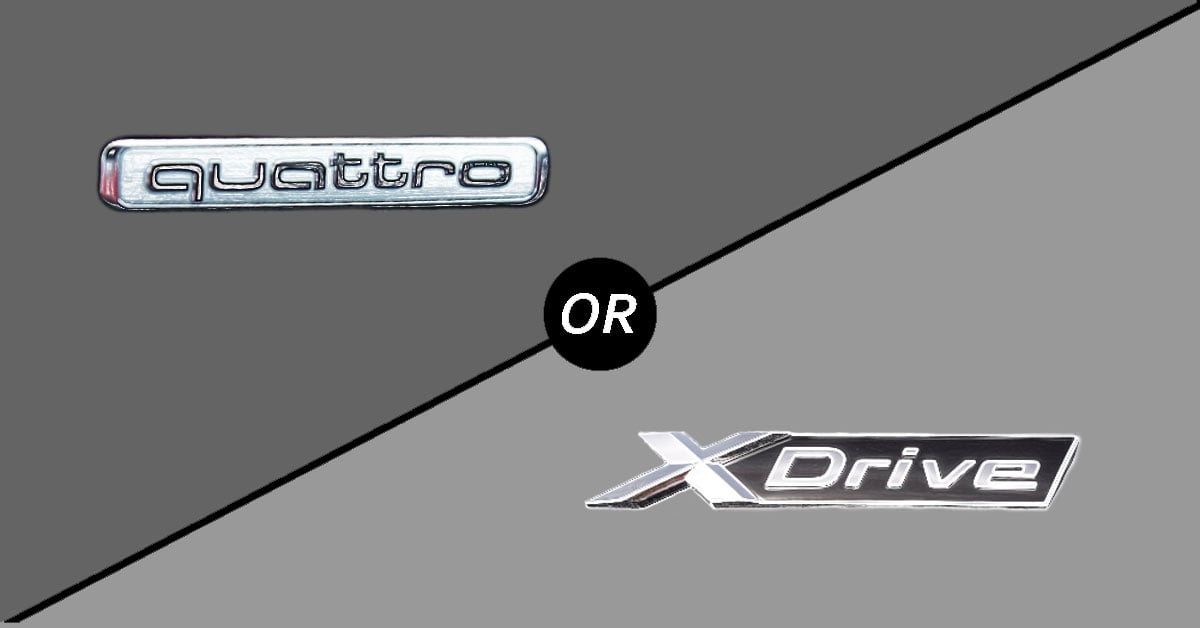This topic is largely controversial as it opens up the debate on which system is better. However if looked at both objectively with facts and real world tests, it is certain that both systems do have their advantages and disadvantages in various situations. What do you think? Inspired by CarThrottle’s article, we list the facts for both below and open up the debate for you.
quattro
Audi’s motorsport history is also the birth of quattro. The first Audi Ur-quattro car was one presented at the 1980 Geneva Motor Show. The coupe-like rear design seemed like a strange shape at the time, but was used as an inspiration by many carmakers years on. When the car made its debut at the 1981 Monte Carlo Rally, it made headlines for overtaking another car that started a minute before. Many victories including two drivers and manufacturers’ titles with Ur-quattro in the WRC cemented the brand’s presence and the importance of quattro.
- The quattro system differs from model to model and isn’t the same across the board. Depending on quattro type, the all-wheel drive system differs in torque split between models. While most of the system is a 50:50 split between the two axles under normal driving conditions, the brand’s S and RS models are more rear-biased. With splits including 60:40 and 15:85 on the Audi R8.
- There are quattro systems which are longitudinally mounted and those which are transversely mounted. Depending on the drive set up, most rear-bias uses torsen differential while front-wheel drive uses the haldex system.
- Longitudinally mounted engines with torsen differentials transfer torque between front and rear axles mechanically with stability control. This allows each wheel to spin differently depending on each corners’ slippage condition. The centre differential locks when a wheel slips on either axle and torque is transferred from the slipping axle to the one with traction.
- While benefits of the torsen differential is its mechanical and always active nature, the brand is moving towards the haldex system with its quattro with ultra-technology for improved efficiency.
- Yet, the drawbacks of the torsen’s diff is that if an axle has no traction, there is no resistance to send to the other side of the car.
xDrive
BMW’s first car to feature four-wheel drive is the 1985 E30 325 ix Allrad that debuted at the Frankfurt Motor Show. It was the all-wheel drive E30 that was the talk among journalists at the time, a car that improved traction in adverse weather conditions but was also dynamic in handling through corners.
- The xDrive system is standard with a rear-bias nature, and can be found on all of the brand’s models from the 1-Series to the upcoming 8-Series. Today the brand’s xDrive merges hybrid drive and even front wheel drive with the current second generation X1.
- The xDrive is a multi-plate clutch system compared to viscous coupling types seen in other all-wheel drive cars. The system is capable of sending 100 per cent of torque to one axle, with an electronically controlled clutch system that varies torque every hundred milliseconds.
- When paired with the dynamic stability control, the drive is capable of braking inside wheels when turning to provide better cornering.
- Because xDrive doesn’t use hydraulic viscous coupling and relies on electrical responses, transitioning from high to low traction surfaces are quicker and with more torque.
- Due to the nature of the rear-wheel drive in xDrive systems, the electronics will always intervene to provide a safety net for the vehicle. However the rear-bias maintains the driving feel of a BMW.
If you’re confused how differentials work, watch this.
Have you tried our bidding system to sell your car? Fill in the form below and Carsome with us!







